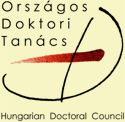 |
|
| Témakiírás |
| |
A kutatási téma leírása:
a.) Preliminaries:
Nowadays, enforcing sustainability is one of the most significant challenges in the manufacturing sector. An essential element of the European Union's sustainability directives (Corporate Sustainability Due Diligence, Corporate Sustainability Reporting, etc.) is the focus on energy efficiency, which also prescribes specific goals for reducing energy consumption and achieving carbon neutrality within a few years. Accordingly, it will be necessary to reconsider the foundations of production processes in the coming years. The present research facilitates the achievement of the above goals by reducing the energy demand of CNC cutting operations.
b.) Aim of research:
The research aims to develop tool path generation algorithms that ensure minimal energy consumption for various CNC cutting tasks while considering the boundary conditions of the cutting process. This can be achieved by modelling the energy demand and introducing newly developed heuristic and neural network-based methods.
c.) Tasks, main items, necessary time:
• Literature research: methods of modelling the CNC machining energy consumption, overview of path planning and feed rate adjustment methods, mapping of AI applications in CNC technology. (0.5 years)
• Determination of test geometries of different complexity, development of tool path generation algorithms for the test geometries, determination of the criteria system for evaluating the created tool paths, development of methods based on heuristic search and/or machine learning to optimize the tool path shape in order to minimize energy consumption. (1.5 years)
• Publication of the achieved results and preparation of publications. (1 year)
• Validation of the results with cutting experiments. (0.5 years)
• Preparation of the dissertation. (0.5 years)
d.) Required equipment:
All the machines and measuring devices needed for the experiments are available at the Department of Manufacturing Science and Engineering.
e.) Expected scientific results:
Development of new tool path generation algorithms, with which the energy efficiency of CNC machining can be significantly increased. In the future, these solutions may become part of modern CAM systems.
f.) References:
[1] Y. He, B. Liu, X. Zhang, H. Gao, and X. Liu, ‘A modeling method of task-oriented energy consumption for machining manufacturing system’, J. Clean. Prod., vol. 23, no. 1, Art. no. 1, Mar. 2012, doi: 10.1016/j.jclepro.2011.10.033.
[2] L. Li, J. Yan, and Z. Xing, ‘Energy requirements evaluation of milling machines based on thermal equilibrium and empirical modelling’, J. Clean. Prod., vol. 52, pp. 113–121, Aug. 2013, doi: 10.1016/j.jclepro.2013.02.039.
[3] N. Liu, Y. F. Zhang, and W. F. Lu, ‘A hybrid approach to energy consumption modelling based on cutting power: a milling case’, J. Clean. Prod., vol. 104, pp. 264–272, Oct. 2015, doi: 10.1016/j.jclepro.2015.05.049.
[4] H. Wang, X. Xu, C. Zhang, and T. Hu, ‘A hybrid approach to energy-efficient machining for milled components via STEP-NC’, Int. J. Comput. Integr. Manuf., vol. 31, no. 4–5, pp. 442–456, Apr. 2018, doi: 10.1080/0951192X.2017.1322220.
[5] A. Aramcharoen and P. T. Mativenga, ‘Critical factors in energy demand modelling for CNC milling and impact of toolpath strategy’, J. Clean. Prod., vol. 78, pp. 63–74, Sep. 2014, doi: 10.1016/j.jclepro.2014.04.065.
[6] K. Xu, M. Luo, and K. Tang, ‘Machine based energy-saving tool path generation for five-axis end milling of freeform surfaces’, J. Clean. Prod., vol. 139, pp. 1207–1223, 0 2016, doi: 10.1016/j.jclepro.2016.08.140.
[7] L. Li, X. Deng, J. Zhao, F. Zhao, and J. W. Sutherland, ‘Multi-objective optimisation of tool path considering efficiency, energy-saving and carbon-emission for free-form surface milling’, J. Clean. Prod., Jul. 2017, doi: 10.1016/j.jclepro.2017.07.219.
[8] N. Hatem, Y. Yusof, A. Kadir, and M. MA, ‘A Review of Tool Path Optimisation in CNC Machines: Methods and Its Applications Based on Artificial Intelligence’, Int. J. Adv. Sci. Technol., no. 29, pp. 3368–3380, 2020.
[9] A. Jacso, G. Matyasi, and T. Szalay, ‘The fast constant engagement offsetting method for generating milling tool paths’, Int. J. Adv. Manuf. Technol., May 2019, doi: 10.1007/s00170-019-03834-8.
[10] A. Jacso and T. Szalay, ‘Optimising the numerical algorithm in Fast Constant Engagement Offsetting Method for generating 2.5D milling tool paths’, Int. J. Adv. Manuf. Technol., vol. 108, no. 7, pp. 2285–2300, Jun. 2020, doi: 10.1007/s00170-020-05452-1.
[11] A. Jacso, B. S. Sikarwar, R. K. Phanden, R. K. Singh, J. Ramkumar, and G. N. Sahu, ‘Optimisation of tool path shape in trochoidal milling using B-spline curves’, Int. J. Adv. Manuf. Technol., vol. 121, no. 5, pp. 3801–3816, Jul. 2022, doi: 10.1007/s00170-022-09527-z.
előírt nyelvtudás: English
felvehető hallgatók száma: 1
Jelentkezési határidő: 2024-10-15 |
|
|
|
|

 Bejelentkezés
Bejelentkezés Fórum
Fórum